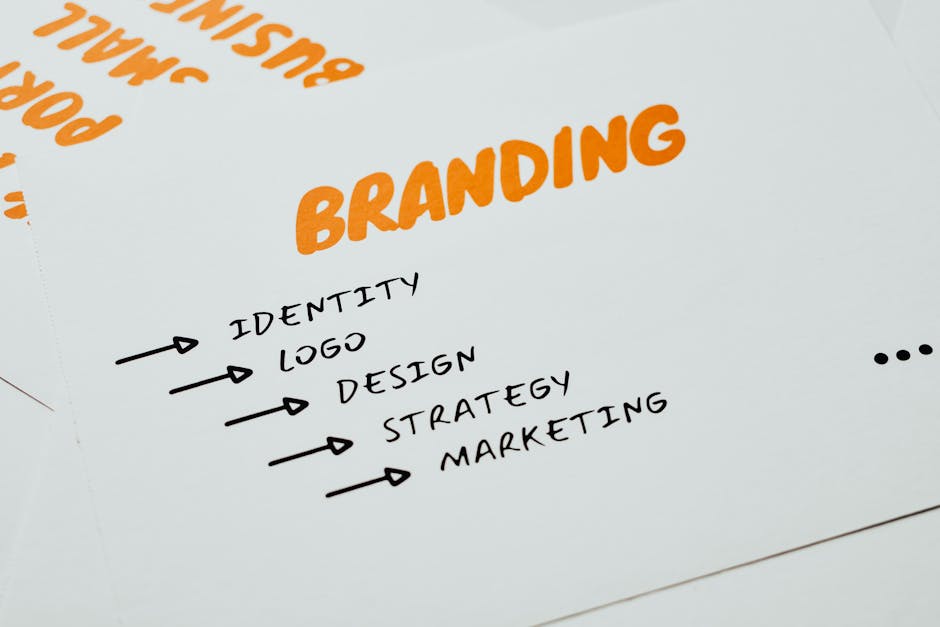Branding for architecture firms is crucial for standing out in today’s competitive landscape. In an industry brimming with visually stunning designs, how do you ensure your firm is remembered? Let’s break it down:
- Identify Your Goals: Understand where you are now and where you want to be in the future.
- Know Your Audience: Define your ideal client and their needs.
- Construct Your Brand Story: Create a compelling narrative that highlights your firm’s unique value.
- Develop a Strong Visual Identity: Distinguish your firm with impactful visuals beyond just a logo.
- Leverage Content Marketing: Share your expertise through blogs and articles to educate and attract potential clients.
Branding isn’t just about aesthetics; it’s about crafting a narrative that resonates with your audience and communicates your unique offering.
In the architecture field, branding serves as the foundation upon which firms build their reputation and visibility. As noted by experts, “hope is not a marketing strategy.” Instead, a proactive approach to branding can set your firm apart, making it the obvious choice for clients who value expertise and innovation over generic solutions.
Understanding these fundamentals is key to ensuring your firm is not only seen but remembered.

Common Branding for architecture firms vocab:
– Architect website design
– Online marketing for architects
– Lead generation for architects
Understanding Brand Architecture
When discussing branding for architecture firms, grasp the concept of brand architecture. This is the structure that organizes and relates a firm’s brands, products, and services. Think of it as a blueprint for how your brand is perceived.
Master Brand
A master brand is the overarching identity that encompasses all other products or services. Think of it as the parent brand that sets the tone and values for everything else. For example, Virgin uses its name across various industries, from airlines to music, emphasizing a consistent promise of quality and experience.
Sub-Brands
Sub-brands operate under the master brand but have their own distinct identity. They allow firms to target specific audiences with custom messages. For architecture firms, sub-brands might focus on different types of projects, like residential and commercial, while still aligning with the main brand’s values.
Endorsed Brands
Endorsed brands are independent brands that benefit from the reputation of the master brand. They maintain their own identity but leverage the credibility of the master brand. This strategy can be useful for architecture firms branching into new markets or services.
Hybrid Brands
Hybrid brands blend elements of both master and sub-brands. They maintain a strong connection to the master brand while having their own unique traits. This approach can offer flexibility, allowing firms to adapt their branding to different contexts or regions.
Understanding these elements of brand architecture helps architecture firms create a cohesive brand strategy that resonates with clients. By aligning each brand component with the firm’s core values, firms can ensure a consistent and memorable presence in the market.
8 Steps to Branding for Architecture Firms
Creating a strong brand for your architecture firm involves more than just a logo. It’s about crafting a unique identity that resonates with your audience and sets you apart. Here are eight essential steps to guide you through the process:
1. Identify Your Goals
Start by defining where you want your firm to be in the future. Are you aiming to expand your portfolio with specific types of projects or enter new markets? Clear goals help you focus your branding efforts and measure success.
2. Know Your Audience
Understanding your ideal clients is crucial. Are you targeting commercial developers or residential homeowners? Each audience has different needs and preferences. By narrowing down your target audience, you can tailor your messaging and services to attract the right clients.
3. Construct Your Brand Story
Your brand story is the narrative that communicates your firm’s values and mission. It should highlight what makes your firm unique and why clients should choose you. A compelling brand story builds emotional connections and trust with your audience.
4. Develop a Visual Identity
Your visual identity includes your logo, color palette, typography, and photography style. These elements should consistently represent your brand across all platforms. High-quality visuals convey professionalism and attention to detail, which are vital in architecture.

5. Establish Brand Guidelines
Brand guidelines ensure consistency in how your brand is presented. They cover everything from tone of voice to logo usage. Consistency across all touchpoints strengthens your brand’s recognition and credibility.
6. Craft a Marketing Strategy
A well-thought-out marketing strategy helps you reach your audience effectively. Consider using a mix of content marketing, SEO, and paid advertising to increase your visibility. Tailor your strategy to your firm’s goals and audience for the best results.
7. Leverage Social Media
Social media platforms are powerful tools for engaging with your audience. Share your projects, insights, and industry news to build a community around your brand. Choose platforms where your audience is most active, like Instagram for visual content or LinkedIn for professional networking.
8. Gather Client Feedback
Client feedback is invaluable for refining your brand and services. Encourage clients to share their experiences and provide testimonials. Positive reviews can act as endorsements, attracting new clients and reinforcing your brand’s reputation.

By following these steps, you can build a strong, recognizable brand that attracts the right clients and sets your architecture firm up for long-term success.
Branding for Architecture Firms: Key Elements
Building a strong brand for your architecture firm requires attention to several key elements. Each component plays a vital role in shaping how your firm is perceived and remembered.
Brand Perception
Your brand perception is how clients and prospects view your firm. It’s influenced by every interaction they have with your brand, from your website to your portfolio. Maintaining a consistent and professional image across all touchpoints helps build trust and credibility. According to research, over two-thirds of businesses report that brand consistency plays a significant role in revenue growth.
Brand Story
A compelling brand story is crucial for connecting with your audience. It communicates your firm’s values, mission, and what makes you unique. For example, Fathom Architects uses the concept of measuring depth to convey a deeper understanding of architectural challenges. This narrative not only sets them apart but also builds an emotional connection with clients.
Visual Identity
Your visual identity includes your logo, color palette, typography, and photography style. These elements should be consistent across all platforms to create a cohesive brand image. Investing in a professionally designed logo is essential, as it serves as the face of your business. A unique and memorable logo reflects professionalism and makes your firm more recognizable.
Typography
Typography is often an overlooked aspect of branding, but it can significantly impact how your brand is perceived. For example, Zaha Hadid’s bespoke typeface is a core element of their branding, helping them stand out in a crowded market. Even if a custom typeface is not an option, choosing the right fonts can improve your brand’s personality and readability.
Photography
High-quality photography is vital in showcasing your projects and conveying the value of your work. Consistent, high-quality images reflect the professionalism of your firm and make your projects more appealing to potential clients. As noted in the research, poor-quality photos can diminish the perceived value of your work. Ensure your portfolio features well-composed, well-lit images that align with your brand’s visual identity.
By focusing on these key elements, you can create a strong, cohesive brand that resonates with your audience and sets your architecture firm apart from the competition. Next, we’ll explore how to effectively promote your architecture firm to reach a wider audience.
Promoting Your Architecture Firm
Once you’ve built a strong brand, the next step is promoting it effectively. Here are some strategies to help your architecture firm reach a wider audience:
Local SEO
Local SEO is crucial for architecture firms wanting to attract clients in specific regions. By optimizing your website and online presence for local search terms, you increase the chances of appearing in local search results. This includes using location-based keywords, claiming your Google My Business listing, and encouraging satisfied clients to leave positive reviews. According to research, businesses that optimize for local SEO see a significant increase in local traffic and inquiries.
Case Studies
Case studies are powerful tools for showcasing your expertise and the success of your projects. They provide potential clients with detailed insights into your design process, problem-solving abilities, and the value you bring. Including client testimonials and before-and-after photos can make your case studies even more compelling. As noted in the research, sharing these stories can build trust and demonstrate your firm’s capabilities.
Infographics
Infographics are a visually engaging way to present information about your projects, design principles, or industry trends. They simplify complex data and can be easily shared on social media and your website. Well-designed infographics not only attract attention but also position your firm as an authority in the field. They are an effective way to communicate your brand story and values.
Architecture Contests
Participating in architecture contests can lift your firm’s visibility and credibility. Winning or even being shortlisted in prestigious competitions provides recognition and can be a powerful marketing tool. It highlights your firm’s creativity and innovation, setting you apart from competitors. Consider entering contests that align with your firm’s specialties and values.
Email Announcements
Email announcements are an excellent way to keep clients and prospects informed about your firm’s latest projects, awards, or events. Regularly updating your email list with engaging content helps maintain relationships and keeps your firm top-of-mind. Ensure your emails are well-designed and include clear calls to action to encourage engagement.
By implementing these strategies, your architecture firm can increase its visibility, attract more clients, and strengthen its brand presence. Next, we’ll answer some frequently asked questions about branding for architecture firms.
Frequently Asked Questions about Branding for Architecture Firms
How do I brand my architecture firm?
Branding your architecture firm involves several key steps:
-
Set Clear Goals: Determine what you want to achieve with your brand. Are you aiming to expand your portfolio, attract more local projects, or become a niche expert? Clear goals will guide your branding efforts.
-
Know Your Audience: Identify your ideal clients. Are they commercial developers, residential homeowners, or government agencies? Understanding your audience helps tailor your brand message to their needs and preferences.
-
Create a Brand Story: Develop a compelling narrative that communicates your firm’s values, expertise, and unique selling points. Your brand story should resonate with your audience and differentiate you from competitors.
-
Develop a Visual Identity: Design a consistent visual style that includes your logo, color palette, typography, and photography. This visual identity should reflect your brand story and appeal to your target audience.
-
Establish Brand Guidelines: Create guidelines that ensure consistency across all marketing materials and communications. Consistent branding builds recognition and trust with your audience.
What is branding in architecture?
Branding in architecture involves creating a cohesive identity that reflects your firm’s values, expertise, and vision. It encompasses brand architecture, which is the structure of your brand and its relationship to sub-brands or endorsed brands.
-
Master Brand: This is the dominant brand name under which all sub-brands operate. For example, in the case of Coca-Cola, all products fall under the master brand image, creating a unified identity.
-
Sub-Brands: These are distinct brands under the master brand, each with its own identity but still connected to the parent brand. In architecture, this might involve different specialties or services offered by your firm.
-
Endorsed Brands: These brands have their own identity but are endorsed by the master brand, lending credibility and recognition.
Understanding these relationships helps in crafting a brand strategy that aligns with your firm’s goals and market positioning.
How to promote an architecture firm?
Promoting an architecture firm effectively requires a blend of traditional and modern marketing strategies:
-
Local SEO: Optimize your online presence for local searches to attract clients in specific areas. Use location-based keywords and maintain an updated Google My Business profile to improve local visibility.
-
Storytelling: Use storytelling to connect emotionally with your audience. Share your firm’s journey, project successes, and the impact of your designs on communities.
-
Creative Marketing: Accept innovative marketing tactics such as engaging social media campaigns, interactive content, and virtual tours of your projects. Creative approaches can capture attention and differentiate your firm from competitors.
By focusing on these elements, architecture firms can build strong brands that resonate with their target audiences and drive business growth.
Conclusion
In the competitive world of architecture, standing out is crucial. Branding for architecture firms is not just about attractive logos or sleek websites—it’s about crafting a story that resonates with your audience and sets you apart.
At ADU Marketing Pros, we specialize in providing custom marketing solutions for architecture firms, particularly those focused on ADU (Accessory Dwelling Unit) construction. Located in the busy heart of San Jose, CA, we understand the unique challenges and opportunities that architecture firms face in today’s market.
Our approach is simple yet effective. We help firms:
-
Highlight Expertise Over Price: In a market where many compete on cost, we position your firm as the expert choice, attracting clients willing to invest in quality.
-
Leverage Local SEO: By optimizing your online presence, we ensure your firm is easily found by potential clients in your area.
-
Use Targeted PPC and Social Media: Our strategies are data-driven, ensuring your marketing budget delivers high-quality leads and increases brand visibility.
-
Build a Strong Brand Identity: We focus on creating a cohesive brand story and visual identity that reflects your firm’s values and expertise.
For architecture firms looking to grow and thrive, partnering with a specialized marketing agency like ADU Marketing Pros can make all the difference. We are committed to helping you attract the right clients and achieve measurable growth.
Ready to lift your firm’s brand? Find our custom strategies and see how we can help your architecture firm reach new heights.




